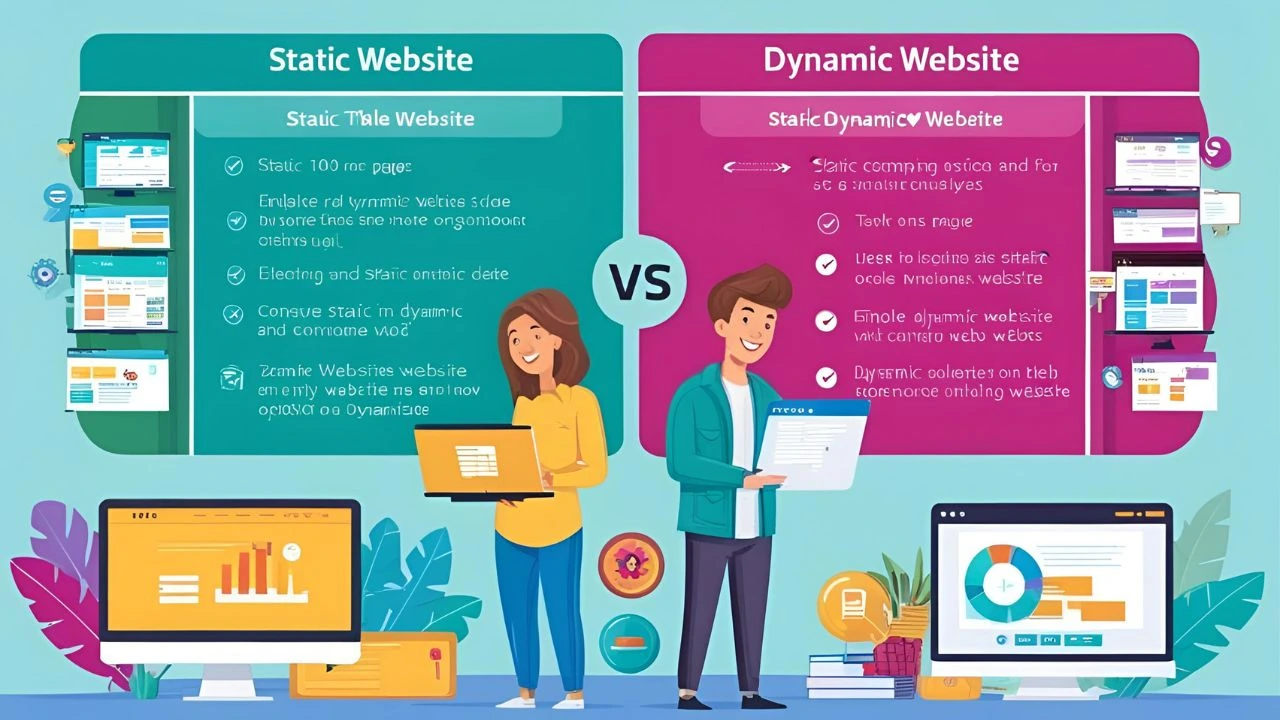Whether you’re launching a personal portfolio, a startup website, or an e-commerce platform, one of the first decisions you’ll face is:
Should you go for a static or a dynamic website?
Understanding the difference between the two is crucial because your choice impacts cost, performance, scalability, and maintenance. Let’s break it all down so you can make the best decision for your project.
What is a Static Website?
A static website is made up of fixed HTML pages. Every visitor sees the exact same content unless you manually update the files.
Key Characteristics:
- Built using HTML, CSS, and sometimes JavaScript.
- Each page is a separate file on the server.
- No real-time interaction with databases.
Example: A digital CV, a landing page, or a basic company profile site.
What is a Dynamic Website?
A dynamic website is interactive and pulls data in real-time from a database. The content can change based on user behavior, preferences, or other variables.
Key Characteristics:
- Built using server-side languages like PHP, Node.js, Python, etc.
- Connects to a database (like MySQL or MongoDB).
- Content updates without changing the code.
Example: Blogs, news sites, e-commerce stores, social media platforms.
Pros and Cons of Static Websites
✅ Advantages:
- Fast Loading Speed: No database queries = lightning-fast performance.
- High Security: Fewer moving parts, so fewer vulnerabilities.
- Cost-effective: Simple to host, often free on platforms like GitHub Pages or Netlify.
- Easy to Deploy: Great for portfolios or quick one-page sites.
❌ Disadvantages:
- No Real-Time Interaction: You can’t personalize content or interact with users easily.
- Manual Updates: Every time you want to change content, you have to edit the source code.
- Limited Functionality: Not ideal for login systems, user dashboards, or content-heavy platforms.
Pros and Cons of Dynamic Websites
✅ Advantages:
- Interactive & Personalized: Can display dynamic content based on user input, location, or behavior.
- Scalable & Flexible: Add features like user accounts, comments, product catalogs, and more.
- Content Management Systems (CMS): Platforms like WordPress, Shopify, or Joomla make updates easy without touching code.
❌ Disadvantages:
- Slower Load Times: More server resources required for real-time content rendering.
- Higher Cost: Development and maintenance usually require more time and technical skills.
- Security Risks: Database-driven sites can be vulnerable to attacks like SQL injection if not handled properly.
When Should You Choose a Static Website?
- You need a simple informational site (e.g., a portfolio, event page, or digital resume).
- The content doesn’t change frequently.
- Your priority is speed, security, and cost-efficiency.
- You’re comfortable managing HTML/CSS or using a static site generator (e.g., Jekyll, Hugo).
When Should You Choose a Dynamic Website?
- You want to engage users with personalized content or features like login, search, or forms.
- You plan to update content regularly (e.g., blog posts, products).
- Your website is content-rich or database-driven.
- You’re aiming for long-term scalability with future expansion in mind.
Static vs. Dynamic Websites: Quick Comparison
| Feature | Static Website | Dynamic Website |
|---|---|---|
| Speed | Very fast | Slightly slower |
| Content Update | Manual | Through CMS or backend |
| Interactivity | Minimal | High |
| Cost | Low | Higher |
| Security | Very secure | Needs more protection |
| Ideal Use Case | Portfolios, landing pages | Blogs, e-commerce, web apps |
Conclusion
Choosing between a static and dynamic website depends on your project goals, budget, and technical expertise.
👉 If you need a fast, affordable, low-maintenance site — go static.
👉 If your site needs to grow, interact with users, or be updated regularly — choose dynamic.
Still unsure? Talk to a web developer or use a hybrid approach — like a static front end with dynamic backend APIs — to get the best of both worlds.


